Like most Google Chrome users I use the address bar to quickly search Google by entering my search terms instead of a web site address and hitting Enter to do the search. Chrome will try to work out where you are located and use the local version of Google if it can, which is great – except that sometimes it gets it wrong, or makes a choice that doesn’t suit you, and no matter what you try you can’t change Chrome’s choice.
I came across this problem after a trip to Italy when Chrome decided that it would continue to use http://www.google.it as the default localised version of Google for searches I entered in the address bar. No matter what I did with settings in the Options dialog, I couldn’t stop Chrome giving me results in Italian, with Italian options, menu items, and so on. From the investigations I did about this problem it became clear that this is a fairly common problem, but there was no obvious fix. So, I was left to my own devices to sort it out – and thankfully I did 🙂
It turns out this setting is stored in one of the files that Chrome uses – Local State – which is stored in either the Local Settings folder (for Windows XP) or the AppData folder (for Windows Vista and Windows 7) for your user account. The Local State file is just a text file with data stored in XML format, and you can safely edit this file to change the setting.
The Local Settings and AppData folders are hidden by default, so you will need to change the Folder Options to allow hidden files and folders to be displayed. In Windows XP this is available from the Tools | Folder Options menu in Windows Explorer, in Windows 7 it’s available from the Organise | Folders and search options menu in Windows Explorer.
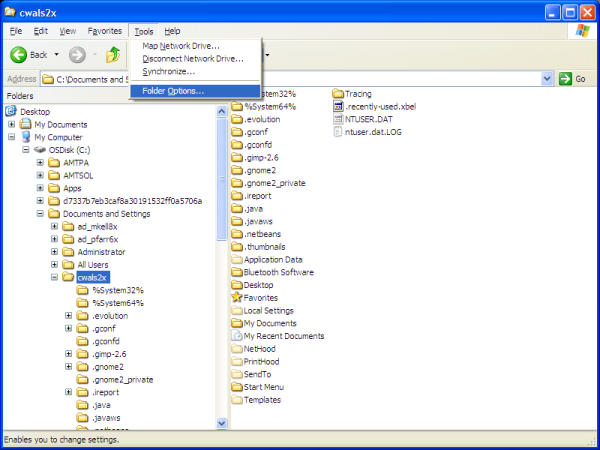
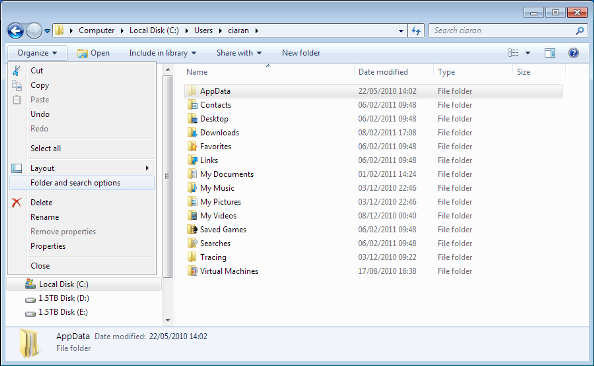
In the Folder Options dialog select the View tab and enable the option to show hidden files, folders, and drives. Click OK to save the setting.

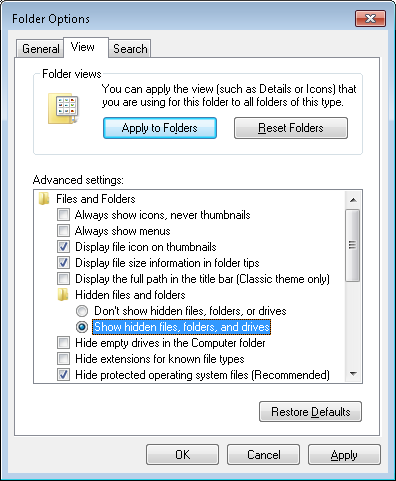
Once you have made this change you should be able to navigate to the relevant folder where you will see the Local State file.
In Windows XP the file is located in:
C:Documents and Settings<your user name>Local SettingsApplication DataGoogleChromeUser Data
In Windows Vista and Windows 7 it’s located in:
C:Users<your user name>AppDataLocalGoogleChromeUser Data
Note: you need to make sure that Chrome is closed down fully before making any changes to the Local State file to ensure that Chrome doesn’t overwrite your changes.
You need to open the Local State file in a text editor like Notepad to edit the XML data that stores the settings. Since the file has no extension, you should be prompted by Windows to select the correct program to use to open the file. You can select Notepad from the list of programs presented.
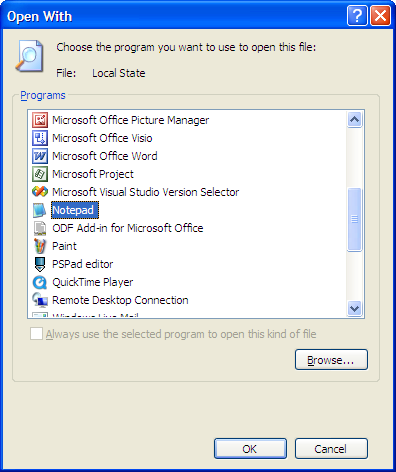
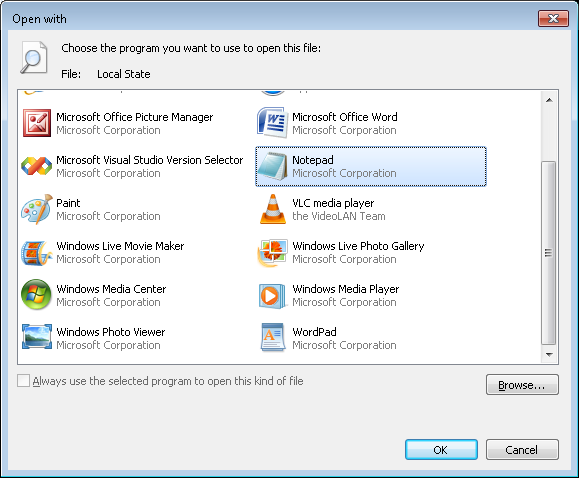
Once you have the file open in Notepad you can scroll down to the “browser” section of the XML data. Under the “browser” section in my file there were two lines that had references to http://www.google.it, which I changed to http://www.google.ie so that Chrome would use the Google Ireland site for searching:
Before:
...
"browser": {
"hung_plugin_detect_freq": 2000,
"last_known_google_url": "http://www.google.it/",
"last_prompted_google_url": "http://www.google.it/",
"last_redirect_origin": "",
"plugin_message_response_timeout": 30000,
"window_placement": {
"bottom": 570,
"left": 0,
"maximized": true,
"right": 800,
"top": 0,
"work_area_bottom": 870,
"work_area_left": 0,
"work_area_right": 1440,
"work_area_top": 0
},
...
After:
...
"browser": {
"hung_plugin_detect_freq": 2000,
"last_known_google_url": "http://www.google.ie/",
"last_prompted_google_url": "http://www.google.ie/",
"last_redirect_origin": "",
"plugin_message_response_timeout": 30000,
"window_placement": {
"bottom": 570,
"left": 0,
"maximized": true,
"right": 800,
"top": 0,
"work_area_bottom": 870,
"work_area_left": 0,
"work_area_right": 1440,
"work_area_top": 0
},
...
You can change this setting to use whichever local version of Google you want (or just http://www.google.com if you prefer). Save the file and close Notepad.
Now when you search from the address bar in Chrome it will use the version of Google that you want 😀